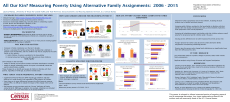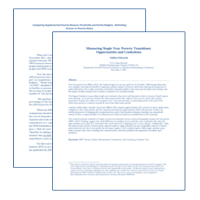All Our Kin? Measuring Poverty using Alternative Family Assignments: 2006 - 2015
All Our Kin? Measuring Poverty using Alternative Family Assignments: 2006 - 2015
Introduction
While the last four decades have witnessed both an increase in the range of living arrangements and in family complexity, the way the Census Bureau configures families has not changed. Since the Census Bureau measures poverty at the family level, comparing total family pre-tax money income to an income threshold based on family size and composition, how we configure families has important implications for poverty measurement.
Since the Census Bureau assigns families based on the relation of each household member to the householder, there are two instances in which parents and their children are not included in the same family: (1) when two unmarried parents live with their shared child, the householder and the child are classified as a the primary family and the unmarried partner of the householder is classified as an unrelated individual and (2) adults over 17 who are not related to the householder are defined as “unrelated individuals,” even if their parent is present in the household.
In this poster, we use the parent identification questions in the CPS ASEC in order to construct alternative “family” assignments for the purpose of poverty measurement. In doing so we incorporate cohabiting parents and their children and unrelated individuals with parents in the household into families. We then compare poverty rates for each alternative family assignment with the official poverty rate by age, race, and educational attainment.





